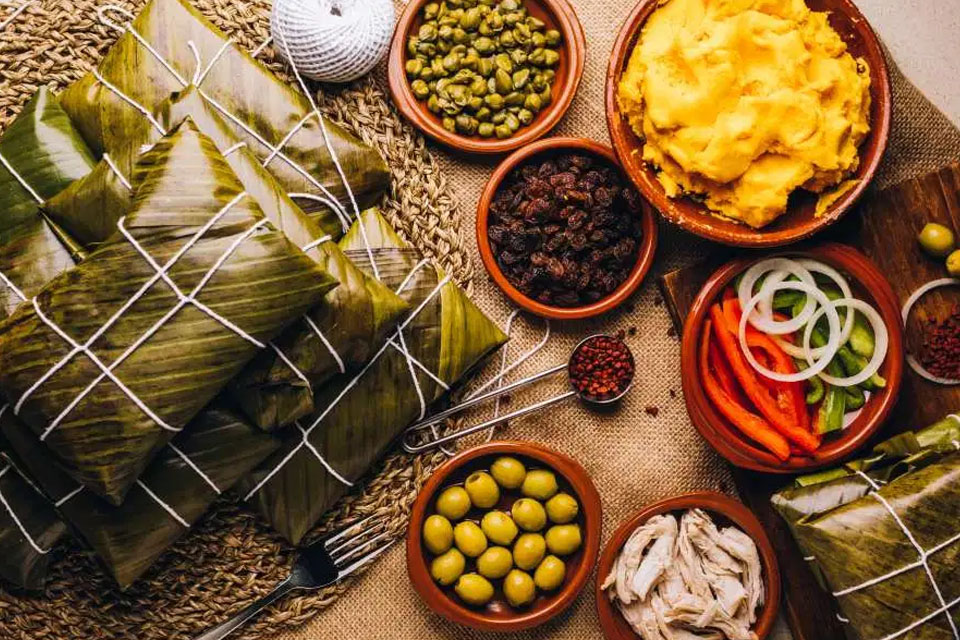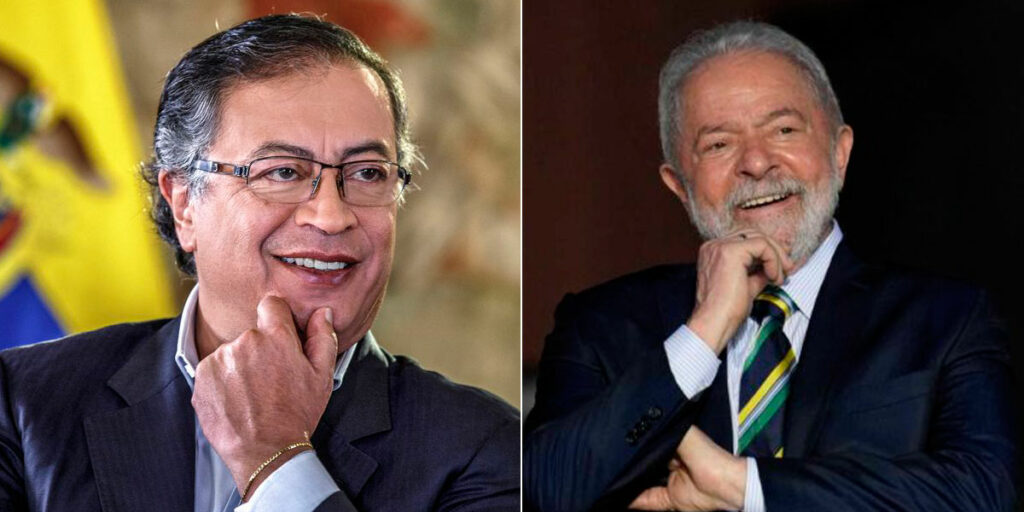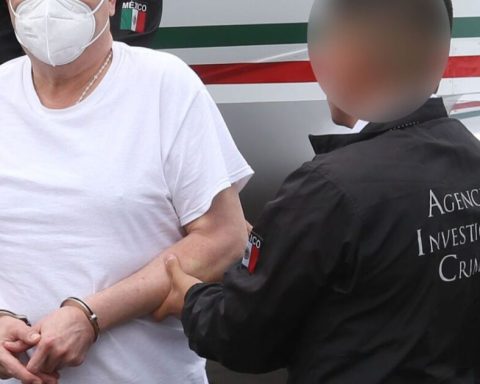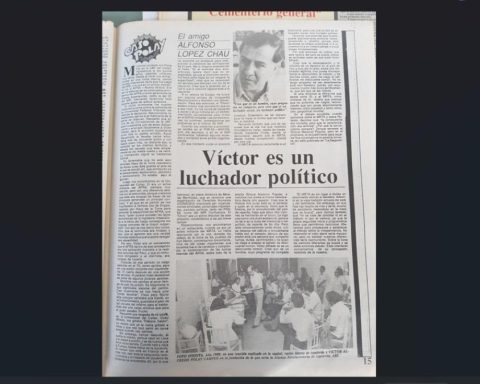The tears that slide down Juliet Toledo’s cheek until they die in her mouth are saltier than usual. Each of those droplets that escape from the tear duct after her sob drags more than six years of adventures between leaving Venezuela —her Venezuela from her— and her recent reception in Uruguay. He carries the memory of the crunching in his stomach when he spent more than a day without eating in Cartagena de Indias, he carries on his shoulders the evocation of that attempted rape by some “truck drivers” on the border between Ecuador and Peru, the xenophobic shouts in Lima, the crisis in Argentina and the sad look of a daughter who “almost did not live her childhood.”
That is why this Christmas comes to Juliet, her husband Carlos and their daughter Ruddelis —yes, it is fashionable among Venezuelans to invent names that are the conjunction of two other names— with a hint of sadness and hope in equal measure. Next week they have an ultimatum to pay the pension in which they have been staying since they arrived in Montevideo 21 days agobut they also have time to obtain their identity card in what they understand to be their first step in search of a formal job.
The Pinto-Toledo family is the reflection of a new migratory trend that has as its destination —and the hope placed in— Uruguay. is part of those more than seven million Venezuelans who have fled their country since the humanitarian crisis began, in what is reported as the largest exodus in recent Latin American history. He is part of the hundreds of thousands of immigrants who suffered from the political and economic instability of South America and who, therefore, had to jump —on foot, by bus or hitchhiking— between country and country. And he is part of the thousands of Caribbean people who in 2022 rearmed their strategy and tried their luck in Uruguay. Why? Carlos, the father of the family, does not hesitate: “Because in Uruguay it is easier to access the documentation to work in good law, because Uruguay gives us access to medical care and the possibility of enrolling my little girl in secondary school, and because Uruguay has been showing us that it has a huge heart to help us with food, clothes or a roof while we rearm ourselves”.
According to the National Directorate of Migration, between January and the end of November of this year, 34,470 Venezuelans entered Uruguay and, in the same period, 25,379 left. That means that this 2022 ends up being the year with the highest immigration of Venezuelans in all history: the positive balance exceeds 9,000 people (the previous record had been in 2018 with a balance that exceeded 3,800 Venezuelans).
“The Pacific migratory route, passing through the Andean countries in a north-south direction, was one of the busiest for those people who had left Venezuela six, five or four years ago. Many saw Chile as a destination, because by word of mouth it was seen as a country with better economic opportunities. Others pointed to Argentina for a reason of scale. But Political and, above all, economic instability made Argentina become a place of transit and, little by little, the Uruguayan destination intensifies”, explains Julio Villavicencio, director of the Jesuit Service for Migrants on both banks of the Río de la Plata.
The data from the National Migration Directorate make it clear: because instead of Venezuelans entering mostly through the Carrasco airport (as happened in the first waves prior to covid-19), now nine out of ten enter through the ports of Colonia, Montevideo or one of the bridges that cross the Uruguay River.
The escape
Before —before the economic and political crisis in Venezuela— Carlos was the head of service in the mayor’s office of his municipality, in the State of Carabobo, in the center of the country. His salary in that political-technical position was enough for him to live on a daily basis, so that his wife could dedicate herself to household chores, so that his daughter was enrolled in a school and to be excited about —one day— running for a position in the deputation. But the tension -economic and political- cornered him until he was left without a job.
“They didn’t even give me the chance to resign, I ended up on the street,” laments this Venezuelan who is now 42 years old, with mulatto skin, some calluses on his feet from so much walking and his hands tanned from how much work he has endured in recent years. six years. “The money”, he continues counting, “was no longer enough for one meal a day, we were afraid and had a lot of psychological sorrow… that’s why we decided to try our luck in Colombia”.
When Carlos crossed the border —at a point where the trails are the preferred paths for those people who come and go— he went to change a stack of bills he had brought and a few Colombian pesos were returned to him. “And what do I do with this?”, He wondered, looking at that misery that he could hold with one hand. Next to him, some ladies sold part of their hair with which Colombian ladies would later make extensions, and the most creative took advantage of the low value of Bolivarian paper money to make handbags or belts that they sold as handicrafts.
Carlos preferred to continue with what he was wearing until the tourist Cartagena de Indias. “An acquaintance invited me to sleep in an abandoned bus, in what was left of a seat”, he says about the beginning of his first two years outside of Venezuela. Shortly after his wife and his daughter arrived, he began to work selling water “or whatever there was.” But…
Colombia experienced a tension resulting from a contradiction between an open policy to Venezuelan immigration and a closed policy on access to essential services. “To be treated in a hospital, you had to be bleeding to death on the street, there was no regular doctor’s visit, nor a pediatrician’s visit for the little girl…”, explains Juliet, with her gaze lost on the tiles of the Sagrado Corazón church. —adjacent to the Seminary school— where he receives clothes and some groceries to celebrate Christmas.
Happens that “Venezuelan migration was (and is) hostage to political management: Right-wing governments (such as the one that administered Colombia at the time) facilitated the entry of Venezuelans because it was their way of justifying that there was a dictatorship in Venezuela and that people were escaping. Leftist governments facilitated access to services such as health and education, but made it difficult for regular entry because it was to justify that there was a crisis in Venezuela…”, says Villavicencio, who among the 82 service points of the Jesuit network in America and the The Caribbean has a comprehensive vision of the migratory flows and routes of recent years.
It was hot in Colombia the day the Pinto-Toledo family decided to move forward in their adventure for a better future. Destination: Peru. “With the girl we walked 17 days to the border with Ecuador. From time to time they would give us lodging in a family house or we would throw ourselves to the side of the road”, Carlos speaks and his wife continues with her gaze lost on the tiles of the church.
Then the fear began. “They had told us to take care of the girl because near the border they kidnap minors to sell their organs for 15 or 20 million Colombian pesos.… go figure”. Just after the territorial limit, when the United Nations agencies gave them shelter, the three Venezuelans breathed easy.
The passage through Ecuador was as fast as it was traumatic. “Some truckers tried to rape my wife…”, Carlo continues talking and Juliet no longer looks at the tiles, she doesn’t look at anything and cries. “Can you imagine what a father of a family feels when his wife is the temptation of others just because they see us vulnerable?”
It’s hard to imagine. But the United Nations reported in the last eight years the disappearance of 6,996 Venezuelan migrants in North America, Central America, South America and the Caribbean. And violence is among the five main causes of death of these disappeared.
For Venezuelans who, instead of following the path to the south, decide to head north, there are two critical points: the Darién plug (on the border between Colombia and Panama, which is defined as the most dangerous jungle in the world) and in Tapachula (on the border between Mexico and Guatemala, where guards block the passage to prevent migrant caravans from pressing the entrance to the United States). This is without counting the deaths in the Rio Grande, the coyotes, the accidents on the “La Bestia” train and endless adversities that from Uruguay seem like something out of a movie.
On October 12, 2022 —the same day that respect for cultural diversity is commemorated— the United States government extended Title 42 to Venezuelan citizens. This is the name given to the regulations that limit immigration to the United States and that served to close borders during the health emergency. “As a result of this change,” explains Lucila Pizzarulli, coordinator of UN Migration Programs in Uruguay, “there began to be a rebound effect in which many migrants began to follow the route in the opposite direction.” And some of those who tried the “American dream” and turned around also arrive in Uruguay.
This very recent migratory phenomenon is mixed with that of families like the Pinto-Toledo family. Because when the change in the immigration policy of the Joe Biden government happened, Carlos, Juliet and their daughter were already in Argentina after having suffered “xenophobia and a lot of rejection in Peru.”
“We hoped that things would be different in Peru, but it was worse: if they saw you selling candy and not working in a suit and tie (because you couldn’t get a job), they looked at you as if you were a criminal. And if you were in a suit, they thought you were stealing their work.” The departure from that country, in which they also spent two years, took place against the clock the day the owner of some nurseries wanted to take little Ruddelis to a place far from her parents.
Juliet starts to cry. Throughout this journey she did not receive psychological help. “Friends? My girl and I no longer know what friends are”he says and cries.
In Argentina, “we began to lend a hand at the home of a businessman, but as the months went by things got bad: inflation climbed higher than it is now in Venezuela, we lost a few kilos and it was unsustainable.” For this reason, after word of mouth and the suggestion of migrant aid networks, they gave way to the latest adventure: Uruguay. “We hope that now is the last stop”. They hug. They cry.

















